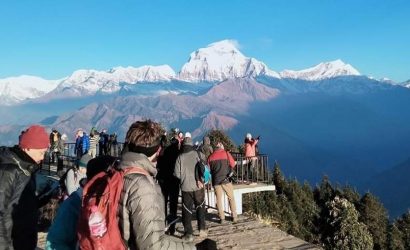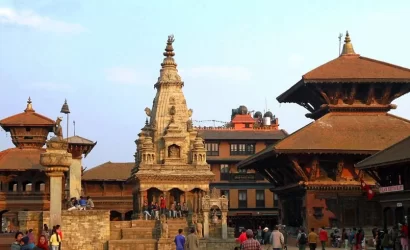Everest Three Passes Trek: The Ultimate Himalayan Adventure
Embark on the Everest Three Passes Trek, a thrilling journey through the heart of the Khumbu region, crossing three high-altitude mountain passes—Kongma La (5,535m), Cho La (5,420m), and Renjo La (5,360m)—while experiencing some of the most breathtaking views of the Everest range.
Starting from Lukla, the trek passes through the vibrant town of Namche Bazaar, the gateway to Everest, before heading to Pheriche, a picturesque village surrounded by towering peaks. From here, the trail leads toward Lobuche, where trekkers get their first glimpses of Everest’s majesty. The journey continues to Gorak Shep, the last stop before reaching the iconic Everest Base Camp (5,364m) and climbing Kala Patthar (5,545m) for a panoramic view of Everest, Lhotse, and Nuptse.
After conquering Everest Base Camp, the adventure intensifies with the crossing of Kongma La Pass, the highest and most challenging of the three passes. The route then descends into the Gokyo Valley, passing through Cho La Pass, leading to the mesmerizing turquoise lakes of Gokyo. Finally, the trek takes on Renjo La Pass, offering one of the most spectacular views of Everest and its neighboring peaks before descending toward Namche Bazaar and back to Lukla.
This challenging yet rewarding trek is perfect for those seeking an immersive Himalayan experience, blending adventure, culture, and jaw-dropping scenery in one epic journey. Get ready to take on the challenge to the Everest Himalayas.
Overview
For those seeking excitement and thrills in the Everest region, the Everest Three High Passes journey is the ultimate journey. Along with reaching Everest Base Camp, this trek will take you over the three highest passes in the Khumbu region: Renjo La Pass (5,340m/17,520ft), Cho La Pass (5420m/17,782ft), and Kongma La Pass (5,535/18,159ft).
These passes will provide you breathtaking views of the Himalayas from various angles. Trekking over the Three High Passes allows you to discover the undiscovered splendours of the Everest region. As part of the Everest Three High Passes journey, trekkers will also see the Nangpa La Valley, the monastery settlement of Thame, and the Sherpa town of Marlung. For those looking for a challenging trip in the Everest region of Nepal that involves crossing high mountain passes, this is the perfect option.
From these high passes trekking pathways, one may see the peaks of Ama Dablam, Pumori, Cholatse, Khumbutse, Khalanga, Nuptse, and Lhotse, as well as expansive views of mountains exceeding 8000 metres. The trekking route goes through Sherpa towns, giving tourists the chance to see landmarks and learn about the unique customs of the Sherpa people.








